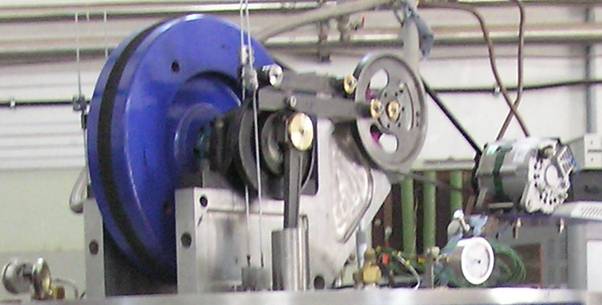| Cryogenic Engineering & Cryomagnet Technology Section |
Expansion Engine
It is a well-known fact that gases can be cooled by expansion from High pressure to Low pressure. The simplest method for expanding the gas is throttling or through a Joule Thomson Valve (J-T Expansion). This woks only below a fixed temperature for the particular gas, for example air at ambient temperature always produces cooling. Whereas, Helium gas will rise in temperature on J-T expansion from ambient temperature. It has to be below 45 K for producing drop in temperature on J-T expansion. This temperature below which the gas cools on expansion and above which it heats on expansion is called its inversion temperature.
To cool helium gas from ambient temperature to temperature well below its inversion temperature different methods are adopted, so called external work method. In this the high pressure gas works against some outside agency such as pushing a piston (in case of Reciprocating type expander) or rotating a turbine. As the gas does work against outside agency its temperature drops.
The Expansion Engine is an active component of a cryogenic refrigerator or liquefier.
Types of Expansion Engines
- Reciprocating Type
- Turbine Type
Reciprocating Expansion Engine
- High Expansion Ratio
- Low Flow Rate
- Constant Efficiency Over Wide Range of Operating Conditions
- Less Sensitive to Contamination and Power Fluctuation Problems
- Control of Speed/Flow Rate is Easier
Working principle similar to steam engine:
- 1st Stroke: Suction of high pressure gas till cutoff point followed by expansion
- 2nd stroke: Exhaust of gas from cylinder
- Flow of gas controlled by valve
- Internal energy converted into work finally extracted in a braking device

Photograph shows Expansion Engine developed at RRCAT
|
|














